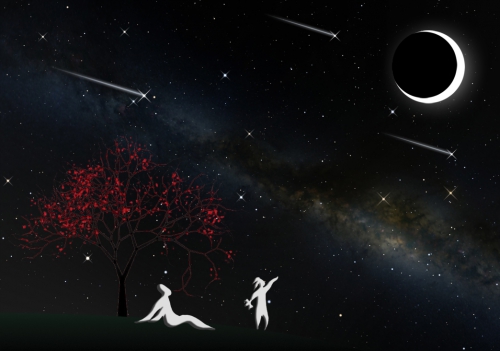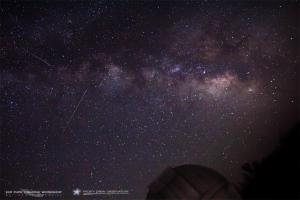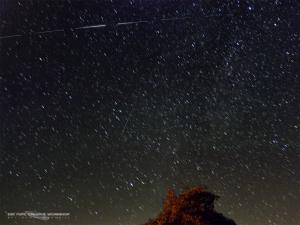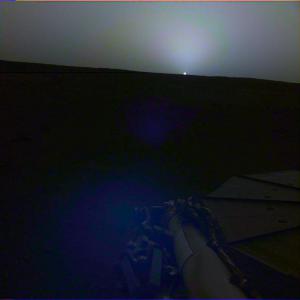
Stargazing Nights
- Where:
- Frosty Drew Observatory
- When:
- Friday May 3, 2019 at 7:00 pm - 9:00 pm
- Cost:
- $5 Suggested Donation per person 5 years and older
Tonight is Stargazing Night and we are officially at eight consecutive weeks of full cloud cover on Friday nights. Forecasts for tonight are exactly as they have been since the end of winter; full cloud cover with rain and t-storms. Tonight’s weather will not be hazardous, so we will open with our cloudy night program from 7:00 pm – 9:00 pm, which will allow visitors to check out our telescopes and operations with the lights on. On the Observatory display and Sky Theatre screen we will feature celestial objects previously photographed at Frosty Drew Observatory. These nights, which are too many this year, offer visitors a chance to learn about how the Frosty Drew Observatory functions. Additionally, these are the nights to get into great discussions about general astronomy with our astronomers. Though let’s put out some hope that this rather disastrous streak of Friday night discrimination against stargazers ends very soon.
-------------------------------
Weekly Happenings
Scott MacNeill
Starting tomorrow morning (Saturday, May 4, 2019) and continuing until Friday morning (May 10, 2019) the annual Eta Aquariid Meteor Shower peak will occur. Unlike most commonly known meteor showers, the Eta Aquariids do not have a specific peak night, but instead a period of potentially excellent peak activity that lasts for about a week, centered on May 7th. This is the second moderately visible meteor shower of meteor viewing season, which the Lyrid Meteor Shower kicked off in late April. Though quite a known meteor shower, the Eta Aquariids are not all that fabulous for Northern Hemisphere sky watchers, bringing a meager increase in regular meteor activity by about 10-15 meteors per hour. This is because the radiant point of the shower (where meteors appear to originate from) does not rise until 2:00 – 3:00 am., giving us about 2 hours of descent meteor viewing. 2019 has set us up for excellent viewing conditions with no Moon present in the morning sky all week. Though clear skies are necessary for observing and that has become a rarity in our region lately. Even though the shower is rather sleepy compared to the Perseids, Quadrantids, or Geminids; there is certainly a silver lining; the Milky Way. As we wrote last week, our best season to view the Milky Way is happening now during the morning hours, and the Eta Aquariids give us another reason to be out under that fabulous starscape. If venturing out to observe the shower, find a super dark location, free of light pollution, with a wide open view of the sky, and be there for 2:00 am. Lay on your back with your feet oriented towards the SE and look to the zenith (top of the sky) or slightly below to catch meteors shooting by. It’s also noteworthy that the Eta Aquariid shower is a product of Comet 1P/Halley (Halley’s Comet), which will not pass through this part of the Solar System again until 2061.
Those who have visited Frosty Drew Observatory over the past 15 years have surely seen an Iridium Satellite Flare occur in the dark skies overhead. Like a visible satellite pass, an Iridium flare would be visible to an observer. The difference was how dramatic the increase in reflected light was over a short period of time, producing a slow motion-like flash in the sky. Depending on your location in relation to the flare, the brightness could have been intense enough to produce a halo around the flare. This was all thanks to a satellite communications network called the Iridium Block 1 Constellation. Each satellite had a highly reflective arrow-shaped antenna, that incidentally reflected sunlight, like a beam, back to Earth as the satellite rotated in its orbit. If an observer was within the diameter of this beam along the ground track, the flare would be visible, with the most dramatic flares happening along the center of the beam. Over the past year, we have seen a drastic drop in frequency of Iridium flares, this is because the original Block 1 constellation has been replaced with the Iridium NEXT constellation, which sadly, does not flare. Most of the original Block 1 constellation satellites hav been de-orbited with only a few remaining in orbit. Unfortunately, this marks the end of fabulous Iridium Satellite Flares. Sporadic flares will still be visible from old satellites, including some of the now defunct Block 1 satellites that failed, though reliability and frequency of these flares will not be what it they once were. If anyone has a photo of an Iridium Satellite Flare, please share it on our Facebook and we will add it to a collection of Iridium Satellite Flare photos that we are curating on our website and social media.
Take a moment to check out these photos of the setting Sun on Mars, captured by the NASA InSight lander on April 24-25, 2019. InSight currently resides in Elysium Planitia along the martian equator. Unlike many of the other robotic devices on Mars, InSight is not a rover, and will remain at its landing site. InSight’s job is to uncover how a rocky body forms and evolves into a planet. Though not a completely uncommon photo, it’s always a fabulous change of perspective seeing an actual photo of a martian sunset. Check out the photo, then catch up on all the amazing things that are happening in Elysium Planitia.



